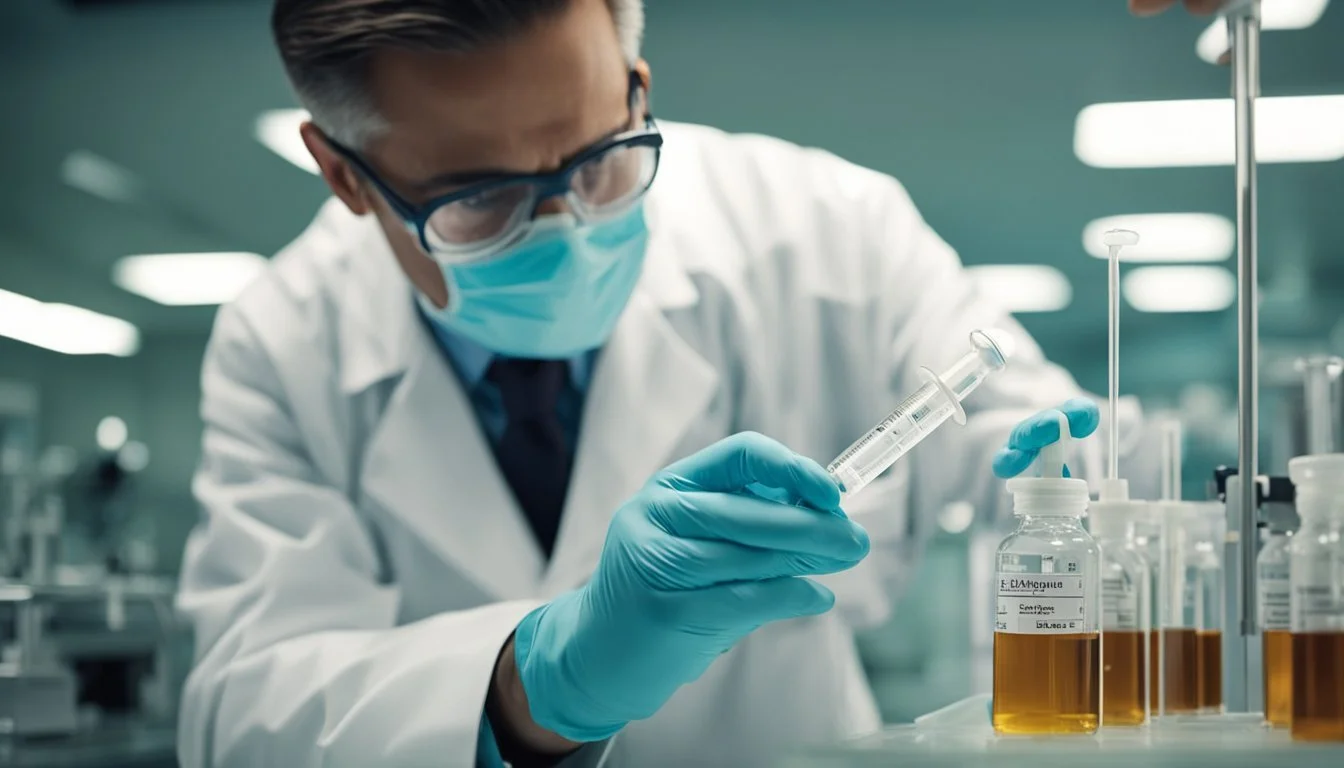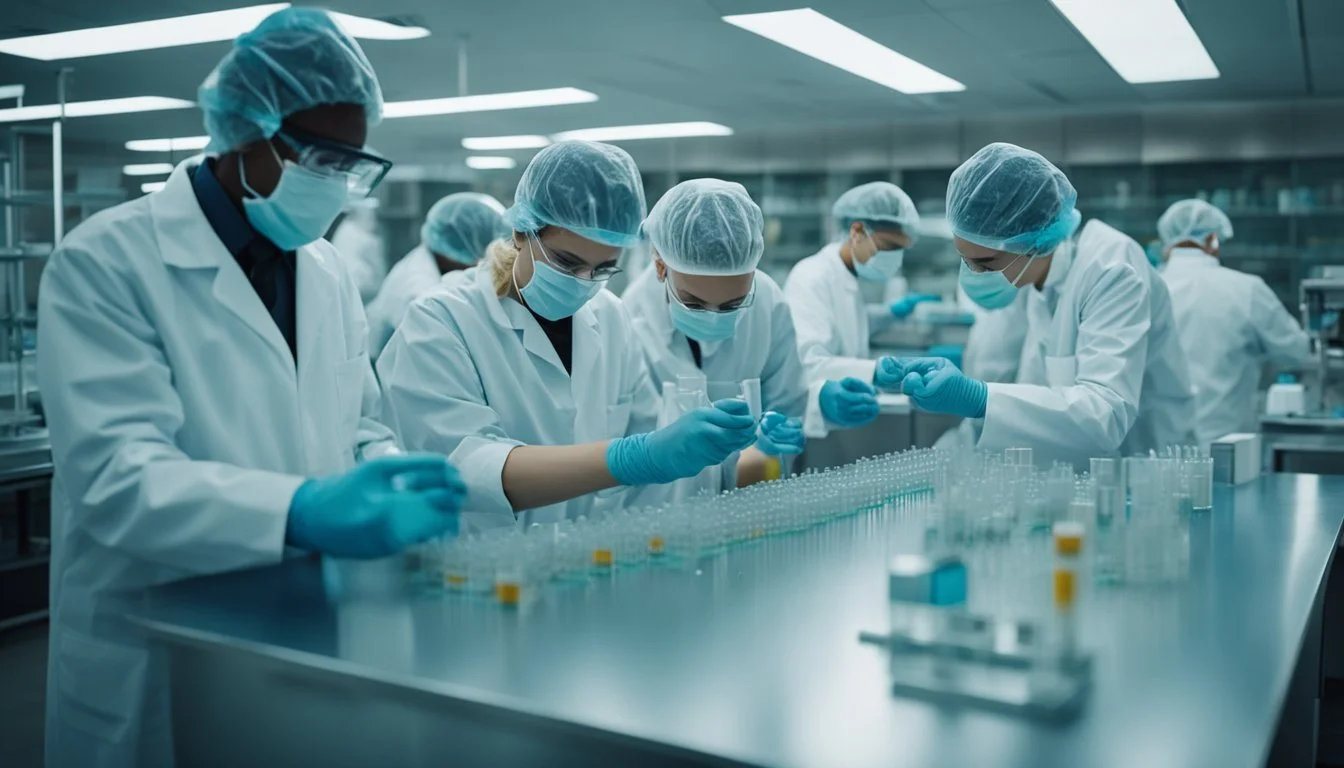Needles and Nanochips: Injecting Truth into the Vaccine Microchip Myth
Vaccine microchip implantation has emerged as a controversial topic, sparking intense debate and concern among the public. This conspiracy theory suggests that COVID-19 vaccines contain trackable microchips, allegedly designed to monitor individuals. Extensive fact-checking and scientific evidence have conclusively debunked this claim, confirming that COVID-19 vaccines do not contain microchips.
The origins of this misinformation can be traced to misinterpretations of statements made by public figures and technological advancements in medical tracking. While some companies have developed microchip implants for storing medical information, these are separate from vaccines and not related to COVID-19 immunization efforts.
Health experts and medical professionals consistently emphasize the safety and efficacy of COVID-19 vaccines. They stress the importance of relying on credible sources for vaccine information and encourage the public to consult with healthcare providers for accurate, science-based guidance on vaccination.
Understanding Vaccine Microchip Theories
Vaccine microchip theories gained traction during the COVID-19 pandemic. These false claims spread rapidly on social media platforms, fueled by misinformation and existing distrust in medical institutions.
Origins of Microchip Conspiracy Theories
The idea of microchips in vaccines emerged from a misinterpretation of digital health records. Bill Gates' involvement in vaccine initiatives made him a target of these theories.
Conspiracy theorists falsely linked Gates' support for digital vaccine records to implantable microchips. This notion quickly spread on social media platforms like Facebook.
Roger Stone, a political consultant, amplified these baseless claims, further popularizing the conspiracy theory.
Debunking Myths About Trackable Microchips
There is no evidence to support claims of microchips in vaccines. Vaccines contain only medical ingredients necessary for their effectiveness.
The technology for trackable microchips small enough to fit through a needle does not exist. Vaccine ingredients are thoroughly tested and documented.
A YouGov poll found that 28% of Americans believed the microchip theory, highlighting the need for accurate information. Experts consistently refute these claims, emphasizing vaccine safety and efficacy.
The Role of Social Media in Spread
Social media platforms played a crucial role in disseminating microchip conspiracy theories. Facebook became a primary vector for spreading this misinformation.
The rapid sharing of false information outpaced fact-checking efforts. Echo chambers on social media reinforced these beliefs among certain groups.
Public health officials struggled to counter the spread of misinformation. Some platforms implemented measures to flag or remove false vaccine claims.
Efforts to combat vaccine misinformation continue, with a focus on promoting accurate, science-based information about vaccine safety and efficacy.
Vaccine Development and Safety Checks
Vaccines undergo rigorous testing and monitoring to ensure safety and efficacy. Multiple stages of clinical trials and regulatory reviews precede approval, followed by ongoing surveillance for adverse reactions.
Clinical Trials and Approval Processes
Vaccine development begins with laboratory research and animal studies. If successful, clinical trials follow in three phases:
Phase I: Small group testing for safety and immune response
Phase II: Expanded group testing to refine dosage and assess side effects
Phase III: Large-scale testing to confirm effectiveness and monitor safety
The FDA reviews trial data and manufacturing processes before granting approval. Advisory committees provide independent expert recommendations. Only vaccines meeting strict safety and efficacy criteria receive authorization.
Monitoring Adverse Reactions
Post-approval monitoring continues through:
Vaccine Adverse Event Reporting System (VAERS): CDC and FDA collect reports from healthcare providers and the public
Vaccine Safety Datalink: Analyzes health records for potential safety issues
Clinical Immunization Safety Assessment Project: Conducts research on specific vaccine safety concerns
Manufacturers must report adverse events. The CDC regularly reviews safety data and updates guidelines as needed. This ongoing surveillance helps identify rare side effects not detected in clinical trials.
Technical Aspects of Vaccination
Vaccines utilize advanced scientific principles to provide immunity against diseases. They employ various mechanisms and ingredients to stimulate the body's immune response effectively.
How mRNA Vaccines Work
mRNA vaccines represent a breakthrough in vaccine technology. They contain messenger RNA (mRNA) that instructs human cells to produce a harmless piece of the virus protein. This protein triggers an immune response, teaching the body to recognize and fight the actual virus if exposed.
The mRNA never enters the cell nucleus or alters DNA. Once the mRNA has delivered its instructions, it quickly breaks down and is eliminated from the body. This process mimics natural infection but without causing disease.
Pfizer and Moderna developed mRNA vaccines for COVID-19. These vaccines have proven highly effective in clinical trials and real-world use.
Vaccine Ingredients and Mechanisms
Vaccines contain several key components:
Antigen: The weakened or inactivated pathogen or its parts
Adjuvants: Substances that enhance immune response
Preservatives: Prevent contamination
Stabilizers: Maintain vaccine potency
Traditional vaccines use weakened or inactivated pathogens. Subunit vaccines contain specific parts of the pathogen. Vector vaccines use a harmless virus to deliver genetic instructions.
Each type stimulates the immune system differently. The body produces antibodies and memory cells, providing protection against future infections.
The Myth of Vaccine-Implantable Devices
Claims of microchips in vaccines are unfounded. Vaccine syringes cannot accommodate microchips due to size limitations. The smallest RFID chips measure about 0.05 mm x 0.05 mm, far larger than vaccine needles allow.
Vaccine ingredients are well-documented and do not include any implantable devices. Regulatory agencies closely monitor vaccine production and administration.
The misconception may stem from discussions about digital vaccine records or misunderstandings of vaccine technology. No evidence supports the existence of microchip implantation through vaccination.
Impact of Misconceptions on Public Health
Misinformation about vaccine microchips has significantly affected public health efforts during the COVID-19 pandemic. These false narratives have influenced vaccination rates and placed new responsibilities on technology companies.
Influence on Vaccination Rates
Misconceptions about microchips in vaccines have contributed to vaccine hesitancy. A YouGov poll found that 28% of Americans believed Bill Gates wanted to use vaccines to implant microchips. This belief has led some individuals to delay or refuse vaccination.
Lower vaccination rates can slow the recovery from COVID-19 and increase the spread of the virus. Unvaccinated individuals face higher risks of severe illness and hospitalization.
Public health officials have struggled to combat these false narratives. Education campaigns aim to provide accurate information about vaccine safety and efficacy.
Responsibility of Technology Companies
Technology companies face pressure to address vaccine misinformation on their platforms. Social media sites have become breeding grounds for conspiracy theories about microchipped vaccines.
Companies like Facebook and Twitter have implemented policies to remove false claims about COVID-19 vaccines. They have also promoted authoritative health information to users.
Joan Donovan, a misinformation researcher, emphasizes the need for proactive measures. Tech firms are exploring ways to identify and limit the spread of vaccine myths before they go viral.
Partnerships between tech companies and health organizations have emerged to provide accurate vaccine information. These collaborations aim to build public trust in vaccination efforts.
Philanthropic Work and Public Health
Bill and Melinda Gates have made significant contributions to global health through their foundation. Their efforts have focused on improving access to vaccines and healthcare for vulnerable populations worldwide.
Bill and Melinda Gates' Contributions
The Bill & Melinda Gates Foundation has invested billions of dollars in public health initiatives. They have prioritized disease prevention and vaccine development for conditions like malaria, polio, and HIV/AIDS.
Their work extends to improving sanitation and providing clean water in developing countries. The foundation also supports research into new medical technologies and treatments.
In response to the COVID-19 pandemic, the Gates Foundation pledged substantial funding for vaccine development and distribution efforts. This included support for manufacturing facilities and cold chain logistics.
Global Vaccination Efforts and Initiatives
The Gates Foundation has partnered with governments, NGOs, and pharmaceutical companies to increase vaccine access globally. They have been instrumental in funding the GAVI Alliance, which works to immunize children in low-income countries.
Their initiatives have helped reduce the cost of vaccines for developing nations. The foundation has also supported the development of new vaccine technologies, such as thermostable formulations.
During the COVID-19 pandemic, they advocated for equitable vaccine distribution worldwide. This included backing the COVAX program to ensure vaccine access for lower-income countries.
The foundation's efforts have contributed to significant reductions in childhood mortality rates in many regions. They continue to work towards eliminating diseases like polio through targeted vaccination campaigns.
Fact-Checking and Combating Misinformation
Reliable fact-checking and public education play crucial roles in addressing vaccine misinformation. These efforts aim to provide accurate information and combat false claims circulating online and in communities.
How Fact-Checkers Respond to Vaccine Myths
Fact-checkers systematically evaluate claims about vaccines using scientific evidence. They consult experts, review primary sources, and analyze data to determine accuracy. When addressing microchip myths, fact-checkers point out the lack of evidence for implanted chips in vaccines.
Major news outlets and independent organizations dedicate resources to debunking false vaccine claims. They publish articles explaining why rumors about Bill Gates or government microchipping plans are unfounded.
Fact-checkers emphasize vaccine efficacy data from clinical trials and real-world studies. They clarify that vaccines do not alter DNA or contain tracking devices.
Educational Initiatives and Public Discourse
Health organizations launch campaigns to educate the public about vaccine science. The Centers for Disease Control and Prevention (CDC) provides clear, accessible information on their website and social media.
Public health experts engage in media interviews to address common concerns. They explain vaccine development processes and safety protocols.
Community outreach programs target areas with low vaccination rates. These initiatives foster dialogue and answer questions from vaccine-hesitant individuals.
Online courses and webinars offer in-depth learning about immunology and vaccine technology. These resources help people understand how vaccines work and why they're safe.



